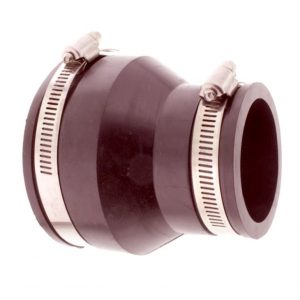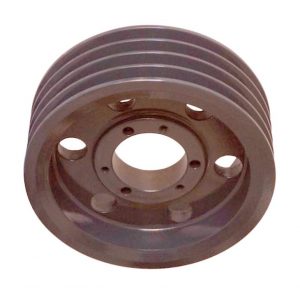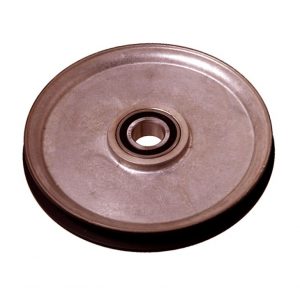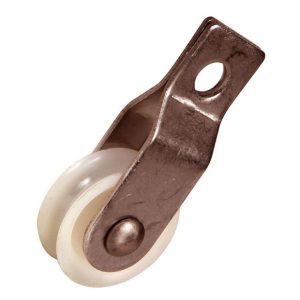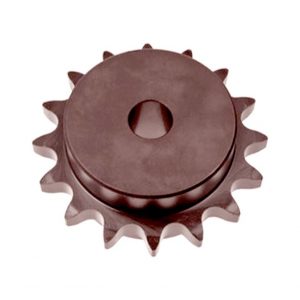Product Description
1.5GT GT2 3GT 5GT 3M S3M 5M S5M MXL XL T5 T2.5 100 110 Teeth Timing Belt and Timing Pulley
1. Teeth Type: T2.5,T5,T10,T20,MXL,XL,L,H,XH,XXH,XXL,SL9,SL12,SL,HTD:3M,5M,8M,14M,20M, STPD/STS type(S2M,S3M,S4.5M,S5M,S8M,S14M) GT2 AND SO ON
2. Material: aluminum, carbon steel, brass and nylon available.
3. Surface treatment: blacken, anodize, zinc-plating and so on
4. Tolerance: conform to customers requirement
5. OEM/ODM service offered
HangZhou CHINAMFG Industry Co., Ltd. is a specialized supplier of a full range of chains, sprockets, gears, gear racks, v belt pulley, timing pulley, V-belts, couplings, machined parts and so on.
Due to our CHINAMFG in offering best service to our clients, understanding of your needs and overriding sense of responsibility toward filling ordering requirements, we have obtained the trust of buyers worldwide. Having accumulated precious experience in cooperating with foreign customers, our products are selling well in the American, European, South American and Asian markets.Our products are manufactured by modern computerized machinery and equipment. Meanwhile, our products are manufactured according to high quality standards, and complying with the international advanced standard criteria.
With many years’ experience in this line, we will be trusted by our advantages in competitive price, one-time delivery, prompt response, on-hand engineering support and good after-sales services.
Additionally, all our production procedures are in compliance with ISO9001 standards. We also can design and make non-standard products to meet customers’ special requirements. Quality and credit are the bases that make a corporation alive. We will provide best services and high quality products with all sincerity. If you need any information or samples, please contact us and you will have our soon reply.
HangZhou CHINAMFG Industry Co., Ltd. is a specialized supplier of a full range of chains, sprockets, gears, gear racks, v belt pulley, timing pulley, V-belts, couplings, machined parts and so on.
Due to our CHINAMFG in offering best service to our clients, understanding of your needs and overriding sense of responsibility toward filling ordering requirements, we have obtained the trust of buyers worldwide. Having accumulated precious experience in cooperating with foreign customers, our products are selling well in the American, European, South American and Asian markets. Our products are manufactured by modern computerized machinery and equipment. Meanwhile, our products are manufactured according to high quality standards, and complying with the international advanced standard criteria.
With many years’ experience in this line, we will be trusted by our advantages in competitive price, one-time delivery, prompt response, on-hand engineering support and good after-sales services.
Additionally, all our production procedures are in compliance with ISO9001 standards. We also can design and make non-standard products to meet customers’ special requirements. Quality and credit are the bases that make a corporation alive. We will provide best services and high quality products with all sincerity. If you need any information or samples, please contact us and you will have our soon reply.
FAQ:
Q1: Are you trading company or manufacturer ?
A: We are factory.
Q2: How long is your delivery time and shipment?
1.Sample Lead-times: generally 10 workdays.
2.Production Lead-times: 20-40 workdays after getting your deposit.
Q3. What is your terms of payment?
A: T/T 30% as deposit, and 70% before delivery.
Q4: What is your advantages?
1. Manufacturer,the most competitive price and good quality.
2. Perfect technical engineers give you the best support.
3. OEM is available.
4. Rich stock and quick delivery.
Q5. If you can’t find the product on our website,what do you next?
Please send us inquiry with product pictures and drawings by email or other ways and we’ll check.
/* January 22, 2571 19:08:37 */!function(){function s(e,r){var a,o={};try{e&&e.split(“,”).forEach(function(e,t){e&&(a=e.match(/(.*?):(.*)$/))&&1
| Certification: | ISO |
|---|---|
| Pulley Sizes: | Timing Pulley |
| Manufacturing Process: | Machined |
| Material: | Al,C45 |
| Surface Treatment: | Oxygenation |
| Application: | Chemical Industry, Grain Transport, Mining Transport, Power Plant |
| Samples: |
US$ 60/Piece
1 Piece(Min.Order) | |
|---|
| Customization: |
Available
| Customized Request |
|---|
What are the common problems and maintenance requirements for pulleys?
Pulleys, like any mechanical component, can experience common problems and require regular maintenance to ensure their proper functioning and longevity. Here are some of the common problems and maintenance requirements for pulleys:
1. Wear and Tear: Over time, pulleys can experience wear and tear due to friction, load stress, and environmental factors. This can result in issues such as worn grooves, cracked or deformed pulley bodies, or damaged bearings. Regular inspection is necessary to identify signs of wear and address them promptly.
2. Misalignment: Pulleys can become misaligned, causing the belt or rope to run off its intended path. This can lead to inefficient power transmission, increased wear on the belt, and reduced overall system performance. Regular alignment checks and adjustments are necessary to ensure proper alignment of pulleys and belts.
3. Belt Tension: Proper belt tension is crucial for optimal pulley performance. Over time, belts can stretch or become loose, resulting in inadequate tension. Insufficient tension can cause slippage, reduced power transfer, and premature wear. Regular checks and adjustments of belt tension are necessary to maintain optimal performance.
4. Contamination: Pulleys can accumulate dirt, dust, debris, or other contaminants, particularly in industrial or outdoor environments. Contamination can lead to increased friction, reduced efficiency, and accelerated wear. Regular cleaning of pulleys is necessary to prevent buildup and maintain smooth operation.
5. Lubrication: Pulleys with bearings require proper lubrication to minimize friction and ensure smooth rotation. Insufficient lubrication can lead to increased friction, heat generation, and premature bearing failure. Regular lubrication according to manufacturer recommendations is essential for optimal pulley performance and longevity.
6. Bearing Maintenance: Pulleys with bearings should undergo regular bearing maintenance. This includes inspecting bearings for signs of wear or damage, cleaning them, and replacing worn-out or faulty bearings. Proper bearing maintenance helps prevent bearing failure, which can lead to pulley malfunction or system downtime.
7. Environmental Factors: Pulleys used in outdoor or harsh environments may be exposed to adverse conditions such as extreme temperatures, moisture, chemicals, or corrosive substances. Extra care should be taken to protect pulleys from these environmental factors. This may involve using appropriate seals, covers, or coatings and implementing preventive measures to mitigate the effects of the environment.
8. Regular Inspections: Regular inspections are crucial for identifying potential problems early on. Inspect pulleys for signs of wear, damage, misalignment, or other issues. Address any identified problems promptly to prevent further damage or system failure.
9. Replacement of Worn-out Parts: If any components of the pulley, such as the belt, bearings, or fasteners, are worn out or damaged beyond repair, they should be replaced promptly. Using worn-out parts can compromise the performance and safety of the pulley system.
10. Manufacturer Guidelines: Follow the manufacturer’s guidelines and recommendations for maintenance and servicing of pulleys. Manufacturers often provide specific instructions on maintenance intervals, lubrication requirements, and other important considerations.
By proactively addressing these common problems and adhering to regular maintenance requirements, pulley performance and service life can be optimized, ensuring smooth and reliable operation in various applications.
Can pulleys be employed in agricultural machinery and equipment?
Yes, pulleys can be employed in agricultural machinery and equipment to facilitate various tasks and improve efficiency. They are versatile components that provide mechanical advantage, enable power transmission, and aid in the movement and control of agricultural implements. Here’s how pulleys can be used in agricultural applications:
1. Belt Drives: Pulleys are commonly used in belt-driven systems in agricultural machinery. They are used in conjunction with belts to transmit power from the engine or motor to different components, such as pumps, fans, and cutting mechanisms. By adjusting the size and arrangement of the pulleys, farmers can control the speed and torque of the driven equipment, optimizing its performance for specific tasks.
2. Harvesting Equipment: Pulleys are utilized in various types of harvesting equipment, such as combines, forage harvesters, and balers. They are employed in the cutting and threshing mechanisms to transfer power and drive the rotating components. Pulleys enable the synchronization of different parts, ensuring efficient crop harvesting and processing.
3. Irrigation Systems: Pulleys play a role in agricultural irrigation systems, particularly in the operation of water pumps. They are incorporated into the pump drive systems and help transfer power from engines or motors to the pump impellers. By using pulleys, farmers can adjust the pump speed and flow rate to meet the irrigation requirements of different crops and soil conditions.
4. Hay and Forage Equipment: In hay and forage equipment, pulleys are utilized to drive various components, such as cutting blades, conditioning rolls, and feed mechanisms. They enable the transfer of power from the tractor or engine to these components, facilitating efficient cutting, processing, and feeding of hay and forage materials.
5. Conveyor Systems: Pulleys are employed in conveyor systems used in agriculture for material handling tasks. They help drive the belts or chains that transport crops, grains, or other agricultural products. Pulleys ensure smooth and controlled movement, enabling the efficient transfer of materials between different stages of processing, storage, or transport.
6. Livestock Equipment: Pulleys find applications in livestock equipment, such as feed mixers, milking machines, and ventilation systems. They are used to transfer power and facilitate the movement of various components involved in these systems. Pulleys contribute to the smooth operation and automation of livestock processes, enhancing productivity and animal welfare.
7. Equipment Adjustments: Pulleys are also employed in agricultural equipment to provide adjustability and flexibility. They enable the adjustment of cutting heights, belt tension, and machine settings, allowing farmers to adapt the equipment to different crops, field conditions, or operational requirements.
Overall, pulleys play a significant role in agricultural machinery and equipment, enhancing power transmission, enabling precise control, and improving the overall efficiency of agricultural operations. Their versatility and adaptability make them valuable components in various agricultural applications.
How do pulleys contribute to load distribution and lifting?
Pulleys play a crucial role in load distribution and lifting by providing mechanical advantage and distributing the load over multiple segments of rope or belt. Here’s how pulleys contribute to load distribution and lifting:
1. Mechanical Advantage: Pulleys provide mechanical advantage, which allows for the multiplication of the force applied to the rope or belt. When a force is applied to one end of the rope or belt, it creates tension that causes the pulley to rotate. As the pulley turns, the force is transmitted to the load attached to the other end of the rope or belt. By distributing the load over multiple pulleys, the force required to lift the load is reduced, making it easier to lift heavier objects.
2. Load Sharing: Pulleys enable load sharing among multiple segments of the rope or belt. In systems with multiple pulleys, such as block and tackle arrangements, the load is distributed over several segments of rope or belt. Each segment carries a fraction of the load, reducing the strain on each individual segment. Load sharing ensures that the load is evenly distributed, minimizing the risk of overload or failure in any single segment.
3. Directional Change: Pulleys allow for directional change in the force applied to the load. By redirecting the force along a different path, pulleys enable lifting and moving loads in various directions, including vertically, horizontally, or at an angle. This directional change is particularly useful in situations where the force needs to be applied from a different position or angle than the original force application.
4. Balance and Stability: Pulleys contribute to load distribution and lifting by providing balance and stability. The use of multiple pulleys in a system helps to distribute the load evenly, preventing excessive stress on any single point. This balanced distribution of the load enhances stability and reduces the risk of tipping or imbalance during lifting operations.
5. Control and Precision: Pulleys provide control and precision in load distribution and lifting. By adjusting the tension in the rope or belt, operators can achieve precise positioning and movement of the load. This level of control allows for accurate placement of heavy objects and ensures smooth and controlled lifting operations.
6. Increased Lifting Capacity: By leveraging mechanical advantage and load distribution, pulleys increase the lifting capacity. The mechanical advantage gained through the use of pulleys allows for the lifting of heavier loads with less effort. The load is distributed over multiple segments of rope or belt, reducing the force required to lift the load and enabling the lifting of objects that would otherwise be too heavy to lift manually.
Overall, pulleys contribute to load distribution and lifting by providing mechanical advantage, load sharing, directional change, balance and stability, control and precision, and increased lifting capacity. These contributions make pulleys an essential component in various lifting and load handling applications.
editor by CX
2024-03-29











